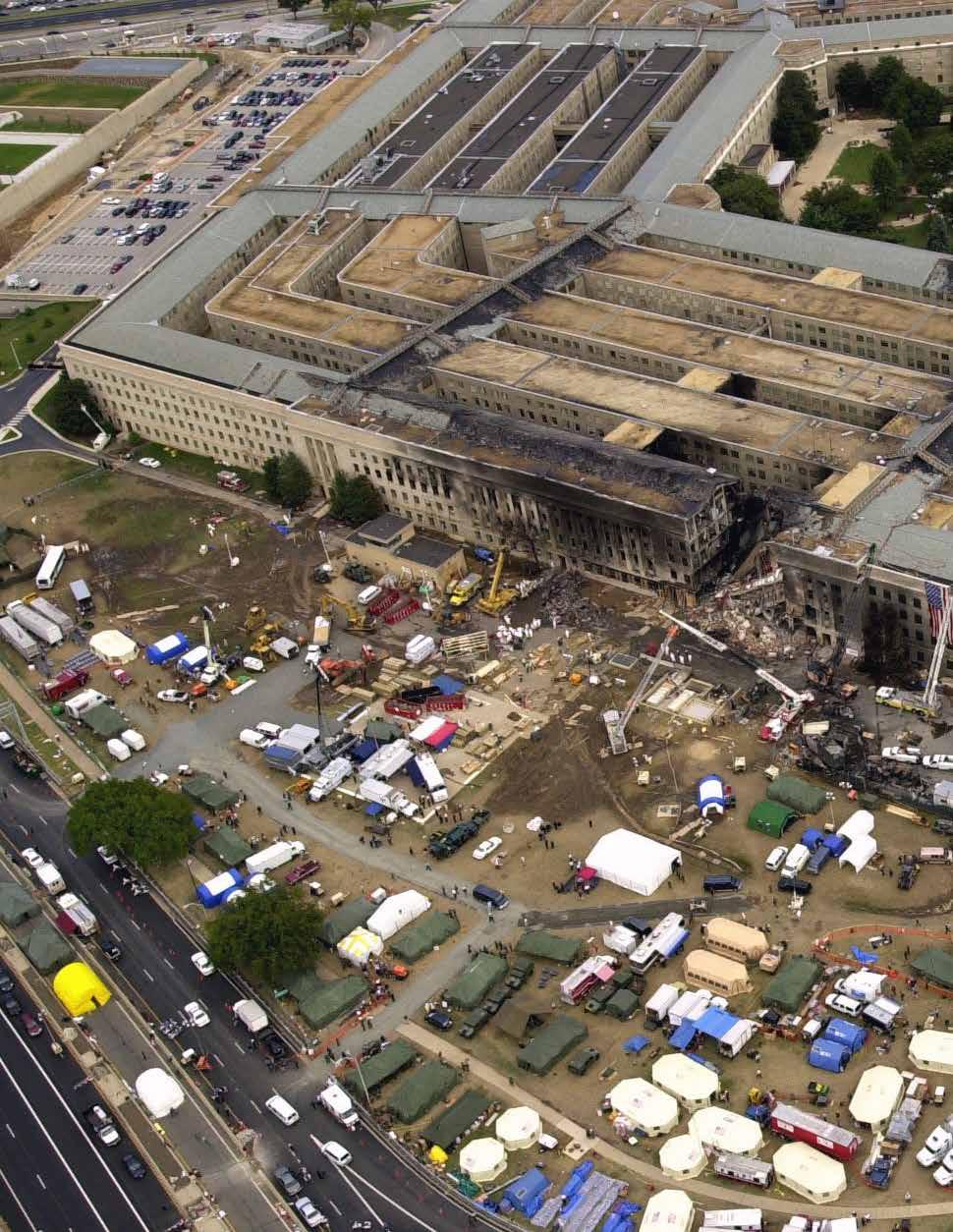
2 minute read
COLLECTIONS FROM THE
By Andrea Hoffman Collections Manager
Whilethis paperweight promoting the Wisconsin National Guard Association (WINGA) Insurance Plan might otherwise seem unremarkable, it actually became a small piece of history 20 years ago this fall. Following the attacks on September 11th, 2001, this paperweight was recovered at the Pentagon from the desk of then-Lieutenant Colonel Gerry L. Kitzhaber, a native of Greenwood, Wisconsin whose office was located on the 3rd Floor of B Ring near Corridor 4. Kitzhaber was working for the army director of training at the time and was at his desk when American Airlines Flight 77, hijacked from nearby Dulles International Airport, hit the west side of the structure between Corridors 4 and 5 at 9:37 am. The Boeing 757 aircraft impact destroyed a wedgeshaped section of the building that extended through outer E, D and C Rings and partially penetrated B Ring. Kitzhaber later described his experience that day in the Spring 2002 alumni newsletter for his alma mater University of Wisconsin-Stout, stating:
Advertisement

“The first reports were incredulous and incomprehensible. An airplane had crashed into the World Trade Center in New York! This shock was further exacerbated by another plane crashing into the other tower before our very eyes! My colleagues and I were in disbelief. How could this happen? Who could be responsible for such an atrocity?…In the midst of this discussion, I took a phone call from my wife. She had called to wish me a happy birthday, unaware of the recent events. I updated her on what had happened in New York. Instinctively she expressed concern for my safety. I confidently responded that I should be all right; after all, this is the Pentagon. Oblivious to the fact that Flight 77, hijacked by political extremists and loaded with 64 crew and passengers, was on a crash course for the Pentagon, I assured my wife I would be okay and said goodbye. Just as I turned to stand up from my chair, a horrendous explosion and devastating shock wave ripped through the building, nearly knocking me off my feet. The plane had struck the Pentagon, penetrating through the E, D and C Rings, stopping directly beneath my office. The wall and windows next to my desk shuddered violently as an incredible rush of air escaped upward between the B and C Rings, pelting the windows and exterior walls with rocks and debris just inches away from me. An eerie silence momentarily enveloped the office and was abruptly interrupted by my directive, “Let’s get the hell out of here!”
While Kitzhaber was able to safely evacuate from the building, 125 of his fellow Pentagon personnel lost their lives that day, most of whom were a mix of civilian employees and members of the military working for the United States Army and United States Navy. Kitzhaber eventually returned to working at the Pentagon when subsequent repairs of the structure were completed in August 2002. He also stayed on as a Pentagon employee following his 2008 retirement from the army as a colonel, this time working for the Department of the Army in a civilian capacity.









